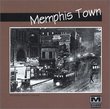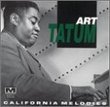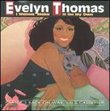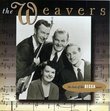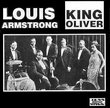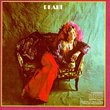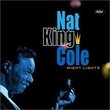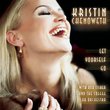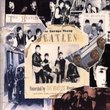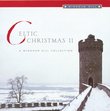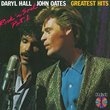| All Artists: W.C. Handy Title: Memphis Blues Band Members Wishing: 1 Total Copies: 0 Label: Memphis Archives Original Release Date: 7/28/1994 Re-Release Date: 6/28/1994 Genres: Blues, Pop Style: Traditional Blues Number of Discs: 1 SwapaCD Credits: 1 UPCs: 781371700620, 781371700644 |
Search - W.C. Handy :: Memphis Blues Band
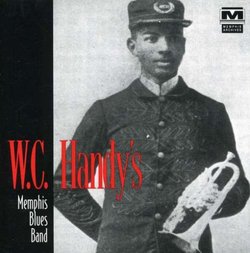 | W.C. Handy Memphis Blues Band Genres: Blues, Pop
William Christopher Handy "The Father of the Blues," was born in Florence, Alabama, on November 16, 1873. As a young boy, Handy had an almost insatiable desire to learn more about music. While the Florence Concert Band p... more » |
Larger Image |
CD DetailsSynopsis
Album Description William Christopher Handy "The Father of the Blues," was born in Florence, Alabama, on November 16, 1873. As a young boy, Handy had an almost insatiable desire to learn more about music. While the Florence Concert Band practiced inside the local barber shop, Handy would peek through the windows and play his cornet, along with the help of a fingering chart displayed on a blackboard. In 1893, he organized a vocal quartet and travelled to Chicago, St.Louis and Evansville, Indiana, ending up in Henderson, Kentucky, where he joined Mahara's Colored Minstrels. Handy stayed on the road for the next seven years, save two years spent at A&M College in Huntsville, Alabama, where he taught music. The year 1903 found W.C.Handy leading the "Knights of Pythias" Band in Clarksdale, Mississippi. One afternoon in Tutwiler, Mississippi, he heard an itinerant musician playing a guitar with a knife blade and singing "Going where the Southern Crosses the Yellow Dog." (The Southern and The Yellow Dog were railroad lines). Handy made a particular mental note of the singer and his unique songs and style and moved to Memphis. Trying to keep in step with the demand for music in Memphis, Handy organized his own band to compete for the more lucrative jobs in a burgeoning musical community. There was, however, stiff competition with the likes of Eckford and Higgins' Imperial Orchestra and Bynum's Superb Orchestra. The mayoral race in 1909 saw a ticket with three candidates and three bands. Handy and his band were hired by the Crump campaign to draw and entertain the crowd's (E.H.Crump had a huge political machine that ran Memphis for most of the first half of the twentieth century). Handy turned to the blues form, and to that itinerant street musician for his composition "Mister Crump" (this song would later be retitled "The Memphis Blues." In 1913, Theron Bennett, a Denver publisher, reissued "The Memphis Blus" with lyrics added by George A.Norton. The song was a huge success, however, Handy was misled by Bennett and Phillips into thinking the song has flopped and, consequently, sold the copyright for $50.00. Undaunted, Handy went back to writing and produced "St.Louis Blues" in 1914, a song which has been one of the most recorded songs in history and has been hailed as the "National Anthem of the Blues." In September of 1917, Handy, along with four band members from Memphis, made the trip to Chicago. There, Handy acquired 4 Chicago musicians and 4 others who had previously played under his direction. With the band assembled, Handy's Orchestra of Memphis headed to New York to make their first recordings. For the first time in over three quarters of a century the recordings of W.C.Handy have been preserved and are available from Memphis Archives in this unique collection. ---Richard James Hite Similar CDs
Similarly Requested CDs
|
CD ReviewsIrreplaceable History, And Fun Old Music Robert English | Independence, OR USA | 04/08/2000 (4 out of 5 stars) "If you're familiar with the typical ragtime orchestra sound, and like it, you're in for a real treat. This is a very spirited group, and it makes other bands of the era (Art Hickman, Isham Jones, early Paul Whiteman) sound stoic and stale. First became aware that W.C.Handy had recorded these "big band" sides when I saw the original entry in a Columbia Records catalog from 1918. All of the sides that he recorded then are featured on this CD, plus some he recorded in the early 1920's (for another label). Sadly, the original masters were not used - commercial copies of uneven quality were the only source material available. Considering that, this reissue is nicely done, but be advised of the scratches and wear noises. Though I could wish for better sound quality, I am well pleased with the fact that these indespensible ragtime orchestra sides are available once again." Ragtime to jazz Lee Hartsfeld | Central Ohio, United States | 10/14/2004 (5 out of 5 stars) "Magnificent performances that, to my ears, document the evolution of ragtime to jazz. "Fuzzy Wuzzy Rag" (a piece blatantly borrowed from "Maple Leaf Rag"!) may very well be an example of pre-Original-Dixieland-Jazz-Band jazz, albeit recorded after that group's first waxings. Delayed history, I'm guessing. If "Fuzzy Wuzzy" hasn't gotten its proper historical due, perhaps the title has something to do with it. (Couldn't the composer have called it "Omnivorous-Mammal Stomp," or something?) Seriously, "Fuzzy" is ragtime gone wild, lively and contrapuntal as can be. The Six Brown Brothers, cranked up. Paul Whiteman, wired. No improvisation within earshot, but much early jazz, after all, had precious little ad-libbing. First-rate musicianship, including a bowed double bass that apparently gave the 1917 recording horn fits. Columbia-label 78s from this period are no gift to modern pick-ups; in light of this, the restored sound is quite good. Handy's place in jazz history is due for reevaluation." Solid introduction to W. C. Handy's work Steven A. Peterson | Hershey, PA (Born in Kewanee, IL) | 06/13/2007 (4 out of 5 stars) "The CD's notes begin by saying: "William Christopher Handy, `The Father of the Blues,' was born in Florence, Alabama on November 16, 1873." He began his musical career in earnest in 1893. One of his best known works, "St. Louis Blues," appeared in 1914; it is described as "one of the most recorded songs in history and has been hailed as the `National Anthem of the Blues.'" It seems to me that his music crosscuts ragtime, jazz, and blues.
The recording quality varies from poor to adequate. Many of the cuts are very scratchy but on a par with the technology of the time period. The various works were recorded between 1917 and 1923. Some illustrations: "Moonlight Blue" is played at a more stately pace. There is an orchestra of 12 persons (plus Handy as Conductor and Coronet player). The resulting sound is distinctively Handy's. No vocals. There is some nice piano playing (apparently by Charles Hillman). "St. Louis Blues"--the musicians are unknown (except for Handy). The tune begins with some bawdy brass and the song is taken at a quick pace. It is, in effect, most infectious. Overall, the playing is pretty crisp, although is sounded to me like things got a little loose toward the middle. Nonetheless, a lot of fun to listen to, scratchy sound and acoustic technology notwithstanding. "Yellow Dog Blues" is another sprightly paced tune. After listening to a number of cuts, one can begin to pick up what might be called the W. C. Handy "sound." Finally, "Muscle Shoal Blues." Again, an infectious tune, well played. This represents a useful beginning to the work of W. C. Handy. This is the first CD I have ever heard of his work, so I can't say how it compared with any other recordings. But it seems, to me, like a very nice introduction to his body of work. " |

 Track Listings (16) - Disc #1
Track Listings (16) - Disc #1
